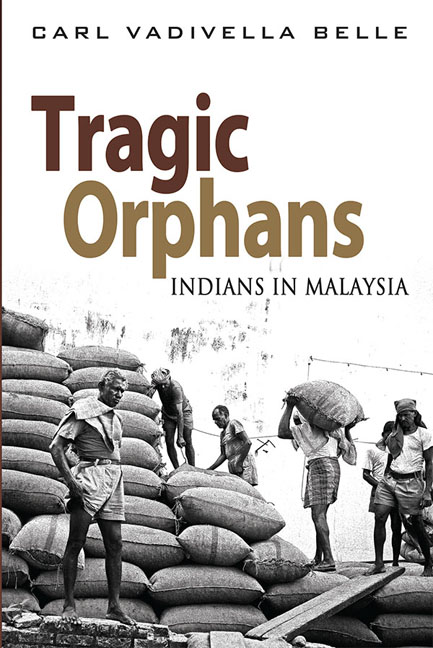Book contents
- Frontmatter
- Contents
- Acknowledgements
- List of Abbreviations
- Introduction
- 1 The Malay Peninsula: Early History, Melaka and the Colonial Setting
- 2 European Colonialism and the Malay Peninsula
- 3 India and the Development of British Ideologies of Empire
- 4 British Governance of Malaya
- 5 Slavery and Indentured Labour
- 6 Indian Indentured Labour in Malaya
- 7 Kangany Labour in Malaya
- 8 Other Indian Immigration
- 9 Indian Political Development to 1941
- 10 The Japanese Invasion, Subhas Chandra Bose and Indian Wartime Nationalism
- 11 The Post–war Period: Reform and Repression: 1945–48
- 12 From Federation to Merdeka
- 13 From Malaya to Malaysia: Singapore, 13 May and the New Economic Policy
- 14 The Mahathir Years: A Changing Malaysian Landscape
- 15 Abdullah Badawi, Islamization, and the Rise of Hindraf
- 16 Najib and 1Malaysia: A New Deal?
- Conclusions
- Bibliography
- Index
- Frontmatter
- Contents
- Acknowledgements
- List of Abbreviations
- Introduction
- 1 The Malay Peninsula: Early History, Melaka and the Colonial Setting
- 2 European Colonialism and the Malay Peninsula
- 3 India and the Development of British Ideologies of Empire
- 4 British Governance of Malaya
- 5 Slavery and Indentured Labour
- 6 Indian Indentured Labour in Malaya
- 7 Kangany Labour in Malaya
- 8 Other Indian Immigration
- 9 Indian Political Development to 1941
- 10 The Japanese Invasion, Subhas Chandra Bose and Indian Wartime Nationalism
- 11 The Post–war Period: Reform and Repression: 1945–48
- 12 From Federation to Merdeka
- 13 From Malaya to Malaysia: Singapore, 13 May and the New Economic Policy
- 14 The Mahathir Years: A Changing Malaysian Landscape
- 15 Abdullah Badawi, Islamization, and the Rise of Hindraf
- 16 Najib and 1Malaysia: A New Deal?
- Conclusions
- Bibliography
- Index
Summary
The large-scale migration of Indians to Malaya throughout the nineteenth century and the first four decades of the twentieth century led to the creation of a distinct Indian Malaysian society. This community remains divided horizontally between the minority upper classes — the middle, professional and business classes — and a large working class which constitutes over eighty per cent of the population. The schism between the classes — upper and lower — within the community can be generally traced to the differing circumstances of their migration to Malaysia. Thus the descendants of “labour” recruitment — those who were contracted under indenture, kangany, or assisted-labour schemes to work in the plantations and within government utilities — now makes up an underclass which continues to fill labouring and unskilled occupations within modern Malaysia. The middle and upper classes have their origins in “non-labour” migratory streams; that is, their forbears were those Indians who were appointed to clerical and technical positions in colonial Malaya, or who established themselves in professions and businesses. The social gulf between the classes remains an obvious feature of Indian society, and many “non-labour” Indians endeavour to maintain their social distance from “labour” Indians, and in extreme cases many even deny all bonds of common ethnicity.
S. Arasaratnam has argued that the shared experiences of workingclass Indians from the time of indenture and kangany recruitment have coalesced into a “plantation-oriented culture” characterized by stasis and underachievement, representing the world view of a neglected and marginalized underclass. It is a culture which is marked by meagre educational attainment, low income, a marked absence of inter-generational vocational and economic mobility, and is plagued by a range of social problems. Moreover this culture has developed its own paradigmatic impulses, which unless broken, threaten to lock Indian labouring classes into a permanent underclass.
The plantation culture had its genesis in the early milieu of Indian labour migration. Workers recruited under both indenture and kangany auspices were subject to repressive regulation, constant invigilation, and harsh discipline. Both systems bore a striking resemblance to slavery in that they established complete legal domination over the labourer and treated him/her as a mere (and dispensable) component in the process of production.
- Type
- Chapter
- Information
- Tragic OrphansIndians in Malaysia, pp. 450 - 458Publisher: ISEAS–Yusof Ishak InstitutePrint publication year: 2014

